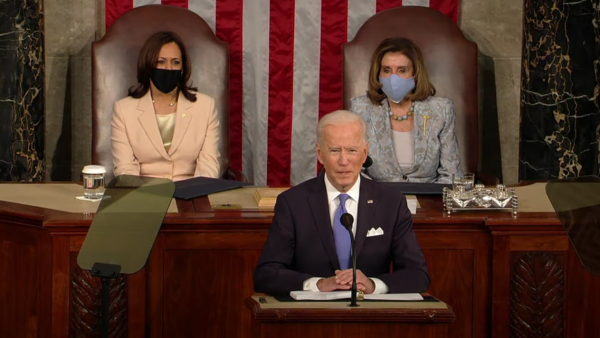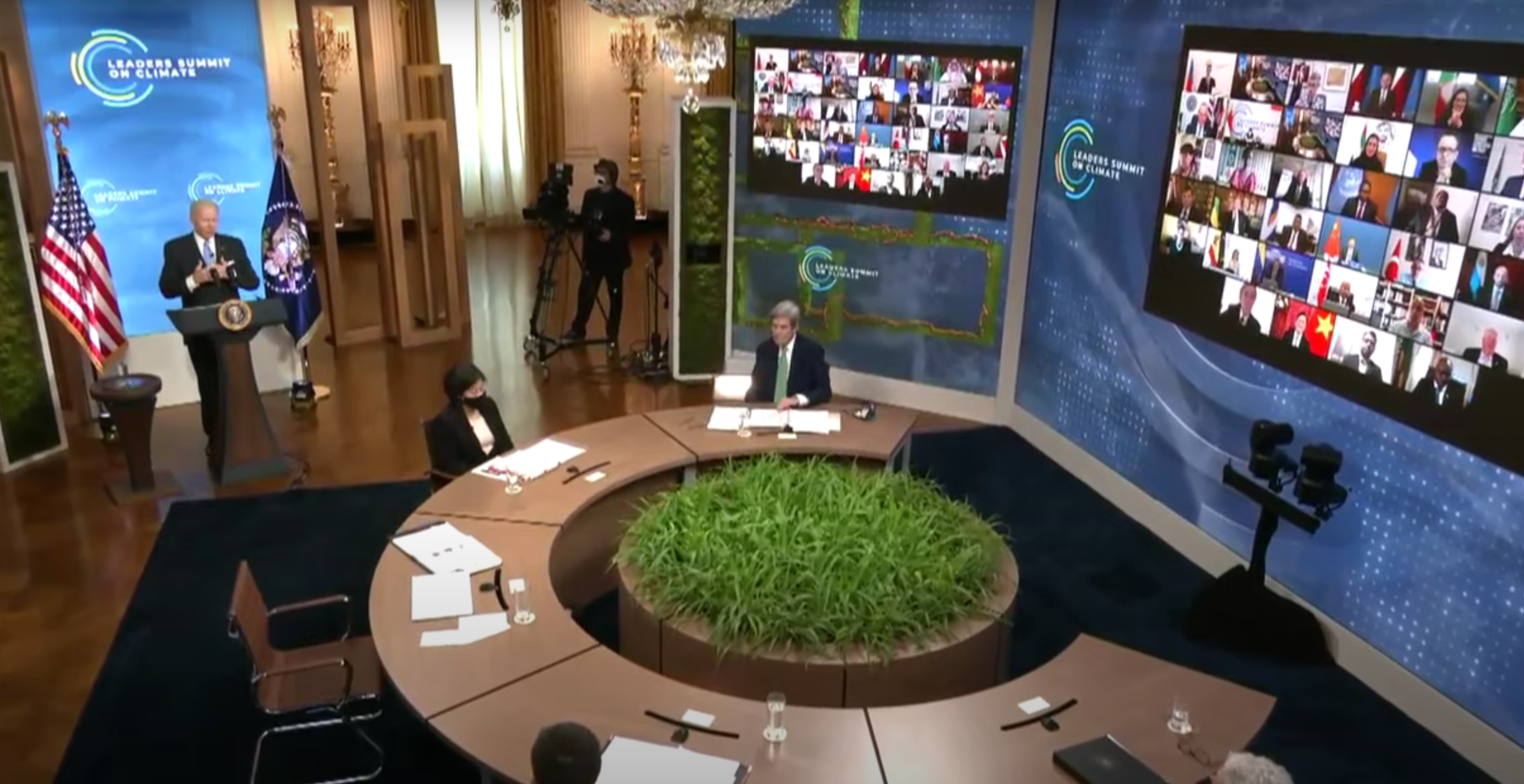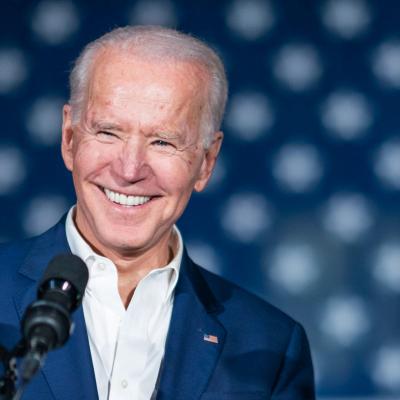Biden's First 100 Days Of Water
From Lead Pipes To Climate Change, New Water Diplomacy At Home And Abroad
26 Apr 2021 by The Water Diplomat
Washington DC, United States

Hours after his inauguration, US president Joe Biden signed an executive order for the US to rejoin the Paris climate agreement. Seven days later, he signed a further slew of orders under a shared banner of “tackling climate change, creating jobs and restoring scientific integrity”, with water featuring high on the agenda.
He said: “Today is ‘Climate Day’ at the White House - which means that today is ‘Jobs Day’ at the White House. We’re talking about American innovation, American products, American labour. And we’re talking about the health of our families and cleaner water, cleaner air, and cleaner communities.”
Biden went on to lay out his vision for putting “millions of Americans to work modernising our water systems”, promising to “properly manage lands and waterways in ways that allow us to protect, preserve them”.
Describing so-called “fenceline communities”, largely those home to people of colour and whites living in poverty, he said: “We’re going to work to make sure that they receive 40 percent of the benefits of key federal investments in clean energy, clean water, and wastewater infrastructure.”
99 days after taking the oath of office, he addressed the joint chambers of congress and reiterated his focus on tackling climate change and upgrading the nation's water infrastructure through a lens of American job creation with his flagship American Jobs Plan.
A president’s first 100 days in office is traditionally a milestone for the administration’s agenda. It is during the honeymoon period at the start of a presidency when it is likely to have more momentum and to get bills passed by Congress.
During his address to Congress, Biden laid out his key policies and made multiple pleas for a constructive approach in a bid to free the legislative part of the American government from partisan gridlock, arguing: "We can’t be so busy competing with each other that we forget the competition is with the rest of the world to win the 21st Century".
The Domestic Water Agenda
By mid-March, the administration was starting to make firm financial commitments to water initiatives. On 22 March, World Water Day, the Department of Energy (DOE) announced it had awarded $27.5 Million USD to 16 projects working across 13 states to decarbonise US water infrastructure.
Singling out wastewater treatment, in particular, which accounts for up to two percent of domestic US energy consumption, secretary of energy Jennifer M. Granholm said: “By modernising our water infrastructure, we can reduce electricity demand and turn water utilities into clean energy producers. The next-generation innovations DOE is investing in will also lower costs while increasing access to clean water for Americans, and drive us toward a cleaner, healthier, more prosperous future.”
It was at the end of March that Biden unveiled his American Jobs Plan, which includes $111 Billion USD of investment in the nation’s crumbling water infrastructure as well as a range of other proposals to clean up and restore polluted land and waterways, improve resilience to climate-related disasters such as flooding, and protect and restore nature-based infrastructure such as wetlands and watersheds.
The drinking water plans incorporate a $45 Billion USD investment to replace 100 percent of the nation’s lead pipes and service lines.
The plan proposes a further $56 Billion USD in grants and low-cost flexible loans to states, Tribes, territories and disadvantaged communities to “Upgrade and modernize America’s drinking water, wastewater, and stormwater systems, tackle new contaminants, and support clean water infrastructure across rural America”.
An additional $10 Billion USD is earmarked for “monitoring and remediating PFAS (per- and polyfluoroalkyl substances) in drinking water and to invest in rural small water systems and household well and wastewater systems, including drainage fields”.
Other aspects of the plan with wide-ranging implications for water include proposals to plug orphan oil and gas wells and clean up abandoned mines. “Hundreds of thousands” such wells and mines, many located in rural communities, “pose serious safety hazards, while also causing ongoing air, water and other environmental damage”.
Citing 22 separate billion-dollar weather and climate disasters in the US in 2020 that cost $95 Billion USD in damages, the plan calls for $50 Billion USD in dedicated investments to improve infrastructure resilience in the face of increasingly severe floods and other risks caused by climate change.
It also seeks to protect and restore “major land and water resources like Florida’s Everglades and the Great Lakes” and alleviate “the western drought crisis by investing in water efficiency and recycling programs”.
The plan, which will have to be approved by Congress in a series of bills, has been described in the financial media as “far-reaching” and “ambitious” and widely welcomed in the water community. However, if and in what form they make it through congress will depend upon Washington small print and trade-offs that have seen grand infrastructure plans founder in the past.
However, some aspects are already being rolled out under existing legislation such as the Water Infrastructure Finance and Innovation Act (WIFIA). In mid-April the EPA announced $300 Million USD in loans for water infrastructure upgrades in Washington DC, Louisville (Kentucky) and the Florida Keys.

The International Implications
Then, on Earth Day, 22 April, Biden took his climate offensive back to the international stage when he hosted his promised Leaders Summit on Climate. Inviting a roster of nearly 40 world leaders to declare more ambitious climate goals ahead of COP26 in Glasgow, Scotland, in November, Biden’s top-line announcement was a commitment by the US to target reducing emissions of greenhouse gases by 50-52 percent by 2030 compared to 2005 levels.
He tied this commitment with his American Jobs Plan, stating that creating jobs and tackling climate change go hand in hand, “empowering the US to build more resilient infrastructure, expand access to clean air and drinking water, spur American technological innovations, and create good-paying, union jobs along the way”.
While there was little in the Leaders Summit that focused on specific areas of water policy, one notable moment came from Biden’s director of national intelligence, Avril Haines. In the discussion on climate security hosted by defense secretary Lloyd Austin, she laid out her reasoning for viewing climate change as an “urgent national security policy”. Admitting “we have not always made it a key priority”, she said: “It must be at the centre of our country’s foreign policy and national security and as such, it needs to be fully integrated into every aspect of our analysis, in order to allow us to not only monitor the threat but also, critically, to ensure that policymakers understand the implications of climate change on seemingly unrelated policies and in identifying opportunities to mitigate the challenge we face".
She referenced the findings of the intelligence community’s latest Global Trends report, which identifies “Environment” as one of six “Structural forces”. Reiterating the report's key environment takeaways, Haines said: “We also note that the impact will not be evenly distributed -- disproportionately falling on poor and vulnerable populations, intersecting with environmental degradation to create new vulnerabilities and exacerbating existing risks to economic prosperity, political stability, military readiness, food, water, health, and energy security".
Another recently published report, the Annual Threat Assessment of the US Intelligence Community, warns: “The degradation and depletion of soil, water, and biodiversity resources almost certainly will threaten infrastructure, health, water, food, and security, especially in many developing countries that lack the capacity to adapt quickly to change, and increase the potential for conflict over competition for scarce natural resources".
In a press briefing at the end of the first day of the Leaders Summit, US climate envoy John Kerry faced questions about Republican resistance to the administration’s pledges. In response, he said that “a lot of the plan is executable through executive order,” continuing, “But that’s the power of having the private sector here. That is the real reason why I’m saying to you that no politician in the future is going to undo this because, all over the world, trillions of dollars, trillions of yen, trillions of euros are going to be heading into this new marketplace".
He was referring to the launch the day before of the Glasgow Financial Alliance for Net Zero (GFANZ) and the UN-convened Net-Zero Banking Alliance (NZBA), comprising 43 major banks, as one of the founding members of GFANZ.
What Kerry seemed to imply is that the Biden administration is seeking to bypass congress to speed through large parts of its climate plan and is depending upon the momentum of the markets to prevent a lot of this work from potentially being undone again by a future administration.
Biden's first 100 days in office have served up wide-ranging implications for the water sector at home and abroad. And while some aspects of his climate policy may be actionable by executive order, much of his domestic investment in water infrastructure will require congressional approval. As his bridge-building efforts with Congress are likely to focus on those areas that are least contentious, water may stand to benefit.
Related Topics

30 Mar 2021 WASHINGTON DC, United States
Key milestone on the road to COP26 focuses on six key themes with specific water impacts: infrastructure issues, event preparedness, nature-based solutions, resilience and global s...
12 Mar 2021 WASHINGTON DC, United States
US President Joe Biden is facing pressure from democratic lawmakers and environmental advocates to support a new clean water billin response to America’s worsening water crisis.
